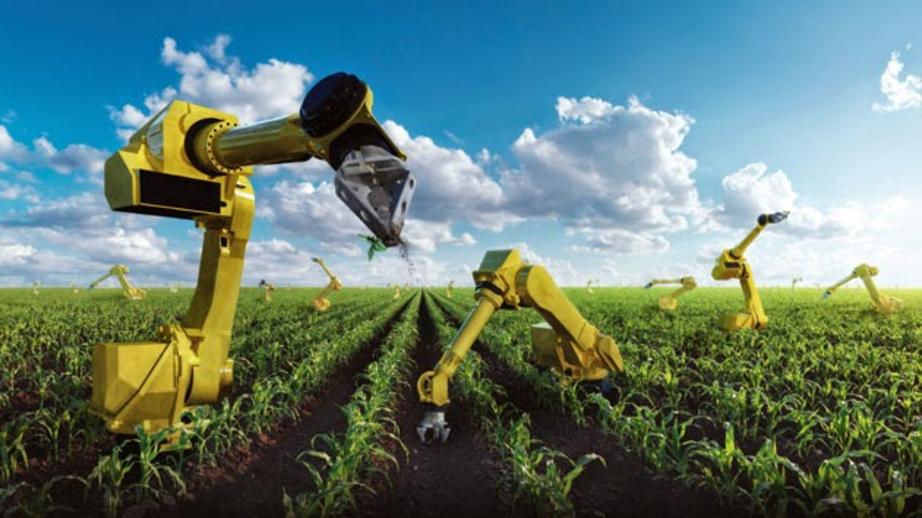Agbots, next gen farming and how they can teach us about the future of work
Agriculture’s automation has been positive for the price of goods but a successful transition can’t be left to the market
Technological unemployment is old news for farming. For hundreds, if not thousands, of years, people have left the land under the pressure of technological advance. Given the increased discussion about the future of work, the agricultural sector could offer some insight into what happens when machines take jobs.
This is even more true given the sector stands on the verge of another technological revolution, with artificial intelligence, algorithms, robots and other forms of automation set to realign its social and economic foundations. As with any change of this nature, there is likely to be unease but it is difficult to see the downside of these developments. The job losses have already happened so the benefits are much more apparent.
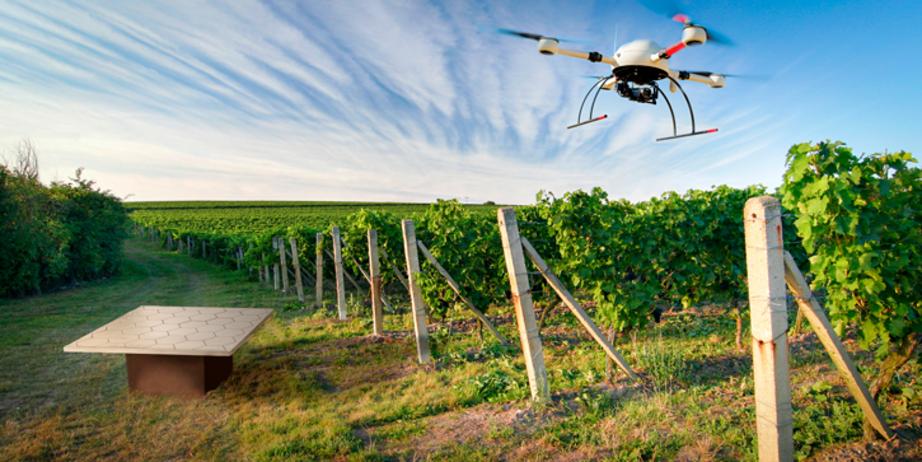
The biggest advantage of this tech revolution is that, with pressure on food supplies likely to mount in coming decades as the world’s population increases, anything that allows farmers to produce more food in a more environmentally friendly way has to be seen as a good thing.
The new technologies could also help to overcome the worst excesses of industrial-scale agriculture. They are likely to allow more productive use of small plots of land, mitigating the tendency of the recent past for larger, more industrialised practices. Smaller and smarter is the catchcry.
The scale of change that has already occurred, and the jobs losses in the sector, can seem pretty devastating. The MIT economist David Autor points out that, in the US in 1900, 41% of the US workforce was employed in agriculture but that, by 2000, that had fallen to 2%, mostly thanks to automation. Since the second world war, employment in the sector has declined by 4% per decade.
In Australia in the 1960s, agriculture accounted for about 9% of the workforce but that has halved. Even between 1981 and 2011, the number of farmers in the country decreased by 40%.
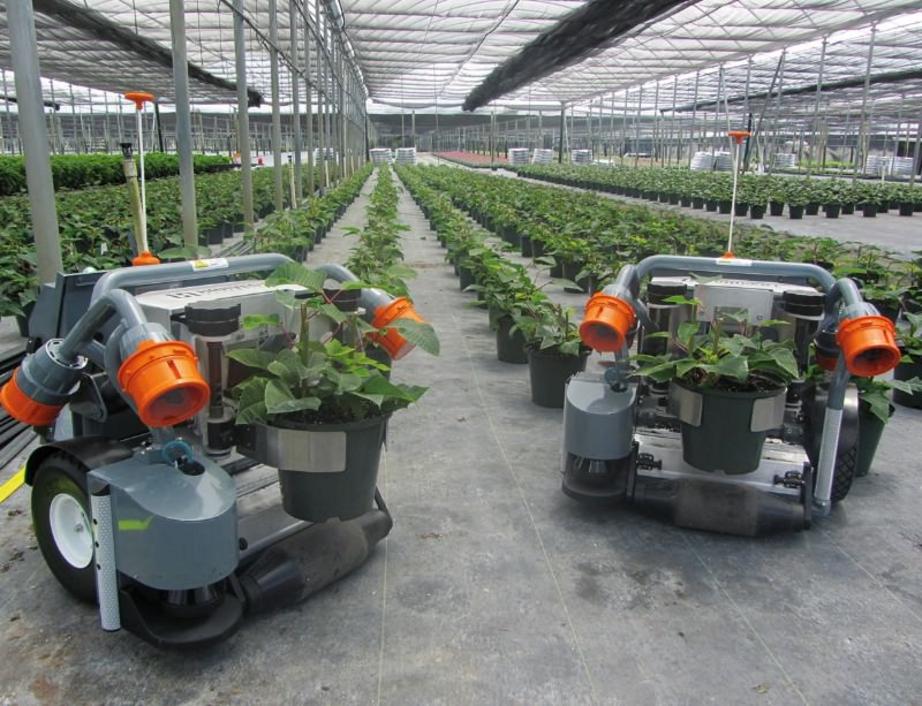
At the same time, productivity has skyrocketed and the price of goods produced has plummeted. Autor speaks of “spectacular productivity improvements” in the US that “have been accompanied by declines in the share of household income spent on food”.
Similarly, in Australia, although the contribution of agricultural to the economy has declined in relative terms – from 14% of GDP in the 1960s to 5% now – efficiency has never been higher. Australia has led the world in technological uptake in the sector and we are one of only 11 countries who are net exporters of food. With the new technologies, this is only likely to increase.
At a recent Falling Walls conference in Berlin, Salah Sukkarieh, professor of robotics and intelligent systems at the University of Sydney, discussed how digital data will affect food production.
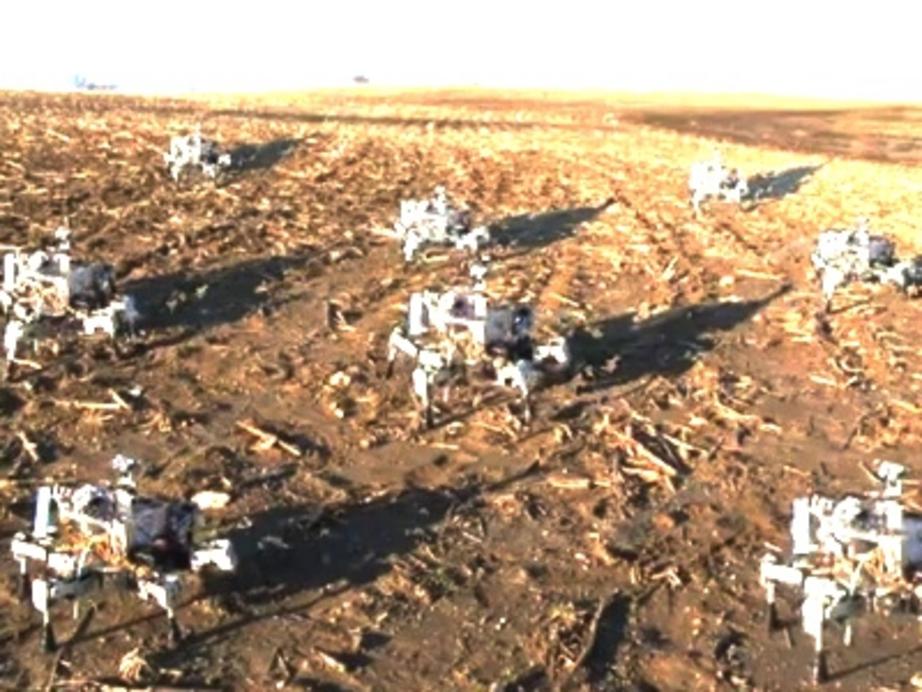
The new technology he highlighted includes robots the size of lawnmowers trundling along rows of crops, monitoring water levels, soil types and collecting data that can be stored and analysed to help farmers make decisions about harvesting, replanting and pesticide use.
There are robots that can “see” that there are bugs on one leaf of a plant but not on another leaf of the same plant and so apply pesticide only to the affected leaf. And there are robots that can detect weeds in a line of crops – that is, can tell the difference between the weed and the young plant – and that can then deploy a small mechanical hand to pull out the weed. No pesticides needed.
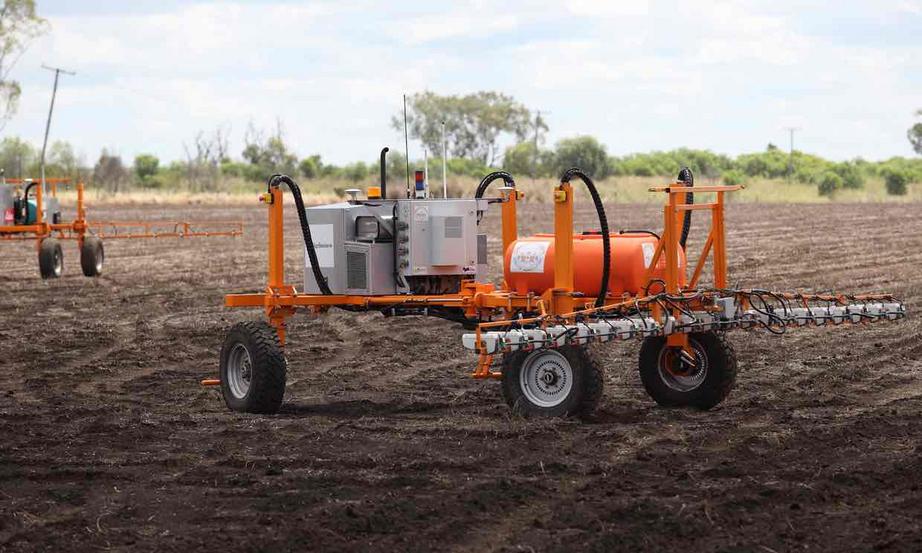
A farming robot from SwarmFarm. Their lightweight intelligent machines have sensors that plant crops and then wander through them, monitoring and predicting the potential yield, removing weeds, killing parasites and ultimately harvesting them. Photograph: SwamFarm
Furthermore there are robots trained to recognise not only each particular tree in an orchard but the individual fruit on each. Algorithms can then count the number of apples (or walnuts, or whatever) on every tree, providing the farmer with precise data that makes managing production much easier.
“The technology is there and, in Australia, the sociopolitical drive too,” Sukkarieh says. “But the upfront capital costs are what keeps it back, especially as we need to appreciate that, outside the robotics, there is the infrastructure to make the operations safe and the training of the users of these digital tools. That requires investment.”
Given the amounts of data involved, the national broadband network (NBN) could be vital in ensuring the viability of this new technology. Wouldn’t farmers need to have access to the cloud?
Sukkarieh, who often works in rural Australia, says he still hasn’t encountered an Australian farmer with access to the NBN. “The robots have sufficient computing power that they act as their own cloud servers.” In fact, he says, “the purpose of designing the robots with sufficient computational power was because of this limitation”.
Some hope these new technologies could appeal to younger people returning to the farm but Sukkarieh is not certain.
“It’s complex. There is already a large generation gap, with minimal succession and no one wanting to go into agriculture,” he says. “Still, the technology could encourage the next generation to get into farming, operating it more like a business as opposed to ‘farming’.”
So a generation of young farmer entrepreneurs controlling an army of agbots via an app on their phone is not science fiction. Furthermore the use of open source software and the sharing of information can make technology and information transfer affordable for developing countries, or, in fact, small business farms.
“I could package an algorithm on a phone that can tell you what to do to improve lettuce growth, and send it to small farm holders in the Pacific regions, or to a hobby farmer in the middle of Australia. This same algorithm may have been developed for a robotic lettuce system.”
The agricultural sector has long been a crucible for arguments about the role of government in managing technological change, for seeing the effects of changing consumer demand and for managing environmental concerns. Where the automation of the sector has been positive, the role of scientific research has been vital as has the role of interventionist governments working with communities and farmers. Problems arise when these things are neglected.

New technology: these FutureDairy cows are being milked by robots. Photograph: FutureDairy
This will hold true for other sectors ripe for automation. A successful transition to a highly automated economy is going to require political cooperation and a realisation that a successful society will require more than smart machines. This change can’t be left to so-called market forces.

